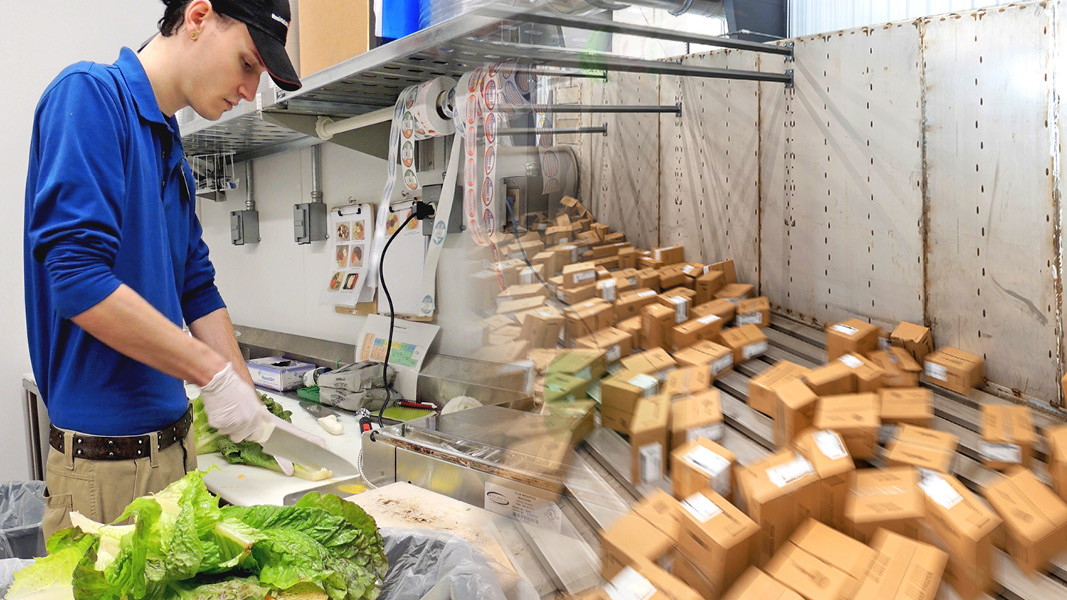Top: Photos by Doug Pinkerton (left) and courtesy of Vanguard Renewables (right).
A BioCycle article on Feb. 8, 2023 reported on recommendations made by the Vermont Depackager Stakeholder Group to the Vermont legislature in January 2023. Among the recommendations was for the Vermont Agency Of Natural Resources’ (ANR) Department of Environmental Conservation (DEC) to revise its 2019 policy for managing food residuals and packaged food and prepare a draft by February 15, 2023. The DEC released the draft on Feb. 15 — “Draft Policy for Source Separation of Food Residuals and Heavily Packaged Food Residuals” — incorporating the stakeholders’ recommendations. “ANR doesn’t have a formal public comment period on policies issued by the Department,” explains Ben Gauthier, Environmental Analyst with ANR. “However, given the interest in this particular topic, we opted to voluntarily invite feedback so interested participants can help us improve the final policy. We are accepting comments through March 16, 2023.”
In Vermont, food residuals are defined in statute (10 V.S.A. 6602(31)) as: “source separated and uncontaminated material that is derived from processing or discarding of food and that is recyclable, in a manner consistent with section 6605k of this title. Food residuals may include preconsumer and postconsumer food scraps. ‘Food residual’ does not mean meat and meat-related products when the food residuals are composted by a resident on site.” Source Separated is defined in statute (10 V.S.A. 6602(32)) as: “the separation of compostable and recyclable materials from noncompostable, nonrecyclable materials at the point of generation.”
After considering the applicable statute, the intent of the Universal Recycling Law (Act 148 of 2012), the recommendations made by the Act 170 Depackaging Stakeholder Group, and evaluating the environmental impacts of food residuals management strategies being employed across the state including the value of source separation, the ANR draft (download draft document) states, “it is the Agency’s policy that source separated food residuals shall not be mixed with heavily packaged food residuals at the point of generation.” The draft policy stipulates the following:
Generators “shall source separate food residuals from non-compostable materials at the point of generation, unless those foods are still edible by people and are being separated for collection or delivery to food donation and hunger relief organizations and, shall separate lightly packaged food from its packaging at the point of generation.” Lightly packaged food is categorized as food that is easily separated from the enclosing packaging, e.g., prepared foods in clamshells, meats in plastic wrap and Styrofoam, bulk containers of food i.e. 5-gallon buckets of pickles, etc.
Heavily packaged food must be managed in accordance with the following: “Heavily packaged food is categorized as food that is difficult to separate from the enclosing packaging but can be separated with depackaging technology. Examples of heavily packaged food include foods with multiple layers of packaging. (i.e. frozen heat-and-serve meals, meal kits, bulk snack packs with individually wrapped or packaged contents); foods in packaging that is difficult to open (i.e. glass jars, cans, etc.), and packaged food from a manufacturer that is palletized or otherwise packed for shipping or distribution.”
Large food generators (generally greater than 1 ton/week of total food residuals) such as food and beverage manufacturers, grocers, distributors, and wholesalers, regularly producing large quantities of heavily packaged food products shall: “Separate heavily packaged food from its packaging at the point of generation, or, outsource source separation to a depackager (or other second party) for the separation of heavily packaged food from its enclosing packaging or, request approval from the Agency to dispose of heavily packaged food in the trash provided there is an established program to separate food residuals and lightly packaged food and the program includes a component for educating staff of the source separation protocols and, there is no second party willing and able to contract with the generator to process the heavily packaged food (e.g. packaging and/or contents are not compatible with the processing facility’s equipment or certification).” The draft policy includes an exception for generators of <1 ton/week of food residuals as long as they have an established program to source separate food residuals and remove lightly packaged food from its packaging.
Haulers are instructed to not “commingle source separated food residuals with heavily packaged food residuals. …. [They] may be transported simultaneously on the same vehicle provided there is an effective means to physically keep each stream separate.” Facilities managing source separated food residuals shall “follow their Certification conditions and approved facility management plans to screen food residual loads and other organic feedstocks for contamination at the time of delivery. Include response actions for when contaminated loads are observed, communicating the contaminated load issue to the generator/hauler, and provisions for load refusal due to excessive contamination.”
Written comments are being accepted on or before March 16, 2023 (send to the attention of Ben Gauthier, ANR/DEC).













